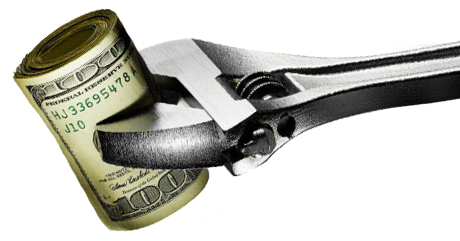Resources Where They’re Needed
A Mini Rant
Lately a lot of people are ranting about something. So we hope you’ll indulge us today as we offer up a bit of a mini rant.
 Those of us who live in the money game of ambulance reimbursement, be it EMS administrator, billing office or provider, have become more and more frustrated because while our costs have skyrocketed, reimbursements have stalled. The reason for the stall is due to near or over half of the dollars we receive are controlled by government entities where payment fee schedules are set by politicians who are eager to win the next election and basically have no clue what we deal with outside of their hallowed government halls.
Those of us who live in the money game of ambulance reimbursement, be it EMS administrator, billing office or provider, have become more and more frustrated because while our costs have skyrocketed, reimbursements have stalled. The reason for the stall is due to near or over half of the dollars we receive are controlled by government entities where payment fee schedules are set by politicians who are eager to win the next election and basically have no clue what we deal with outside of their hallowed government halls.
The Pennsylvania Example
As most of our regular readers know, our billing office is headquartered in beautiful Northeastern Pennsylvania. So, we are extremely familiar with the terrible Medicaid payments allowed to ambulance providers and suppliers under the Pennsylvania Medicaid ambulance fee schedule. While not the lowest in the nation, the payment rates are not too far from the bottom of the barrel. Ambulance transports are reimbursed at a rate of $200 for an ALS (straight ALS, no additional allowance for ALS 2 or SCT runs), $120 for a BLS (emergency or non-emergency paid at same rate) and $2 per mile.
The mileage payment is an additional kick in the teeth. For years, Pennsylvania Medicaid paid round trip mileage, less the first 20 miles. The round trip mileage was dropped due to CMS rules and payment was allowed for only loaded miles, but instead of dropping the disallowance for the first 20 miles, that prohibition was maintained and transferred to the loaded mileage payment. So, the whopping $2 per mile doesn’t kick in unless the transport exceeds 20 loaded miles.
By the way, those payment rates haven’t been adjusted since 2004 when the rates were doubled due to the fact that the fee schedule that existed prior to 2004 hadn’t been updated in over 15 years!
Relief pending?
This week, Pennsylvania State Representative Martin T. Causer introduced legislation in the Pennsylvania House to increase the Medicaid reimbursement by 50%. The press release detailing the proposal noted that Pennsylvania’s Medicaid ambulance fee schedule includes rates that are over 200% below Medicaid and commercial insurance reimbusements and… “do not come close to covering the real cost of transporting Medicaid patients.”
We couldn’t agree more!
Fiscal Impact
Here’s what bothers us the most and is the point we’re driving home in today’s blog.
The proposed fiscal impact of raising Pennsylvania’s Medicaid ambulance fee schedule is estimated to be $16 million dollars. Really, that’s a drop in the bucket compared to the wasteful spending promulgated in our home State.
Case in point, is the announcement by Pennsylvania Governor, Tom Wolf, to include $10 million in 2017 budget funds to provide Naloxone to first responders and law enforcement (most to law enforcement) statewide.
What a waste of money!
While the legislation will battle over providing the $16 million in funds to cover a 50% increase which really should be a 200% increase, the Governor proposes to hand out money for drugs to combat the opium overdose epidemic to people who really don’t want to use it.
However, while proposing those dollars makes a good press release sound bite for the day, the Governor’s effort and dollars would be better spent adding an additional $10 million to the proposed $16 million called for by Representative Causer’s initiative to bolster Medicaid payments even more.
Our Point
Our point here is not specific to Pennsylvania (although if we can cause you PA readers to reach out to your State legislators to advocate for the initiative- that would be awesome…) it’s an across-the-board problem in America.
Until someone at the top of government at all levels comes down to the street to see what we are forced to work with…how little we are forced to work with, then no real relief will happen. While we scramble to once again re-invent EMS, paying more in costs while reaping stagnant reimbursement levels, all it would really take to bolster EMS in the United States is for someone in government to recognize that we all must be paid enough by Medicare, Medicaid and ultimately by the insurance industry to cover our costs to provide the service.
We always fear that it will take some catastrophic event in the U.S. for lawmakers to wake up and appropriate the necessary funds to make EMS a priority in America. We hope that doesn’t happen.
But, until the day when somehow someone in government wakes up and makes EMS in America an actual priority; we’ll continue to see misplaced funds committed to sound bite, feel good projects that really do nothing to support solid EMS initiatives overall.